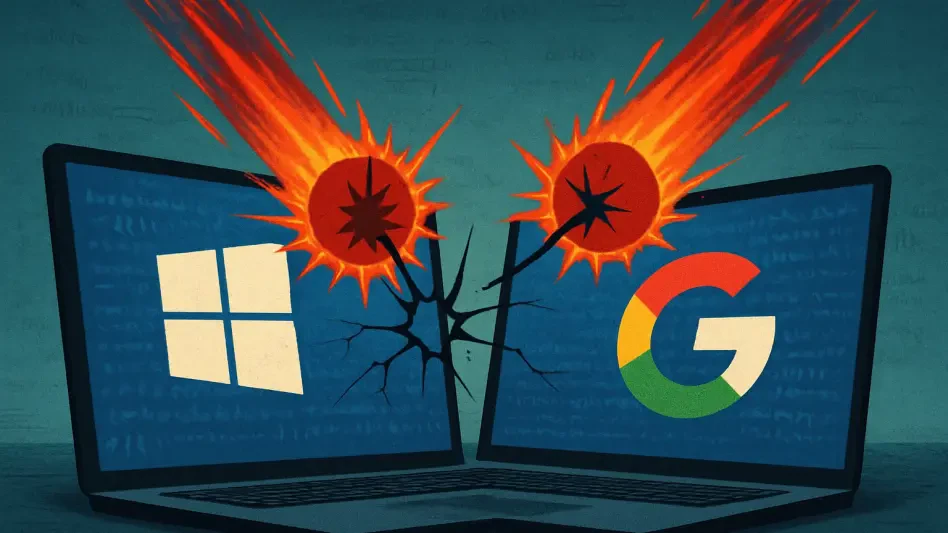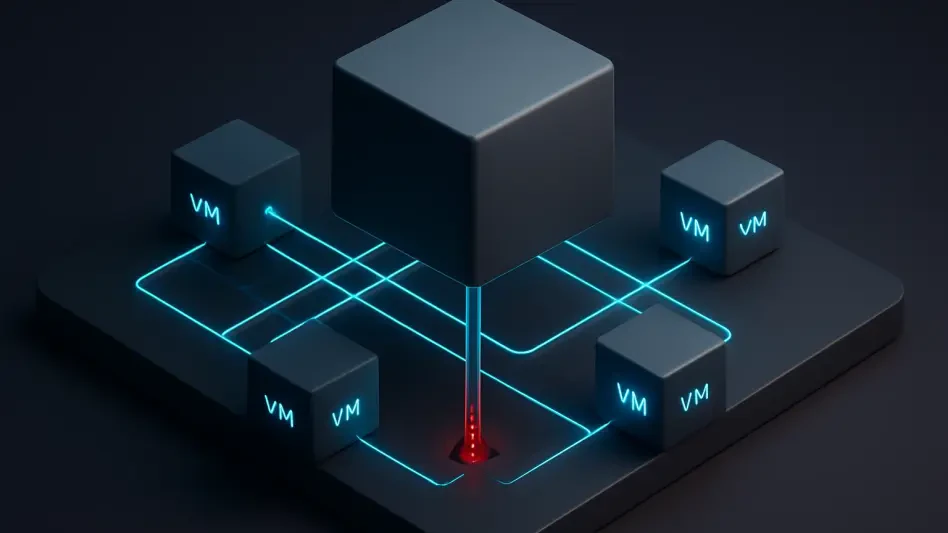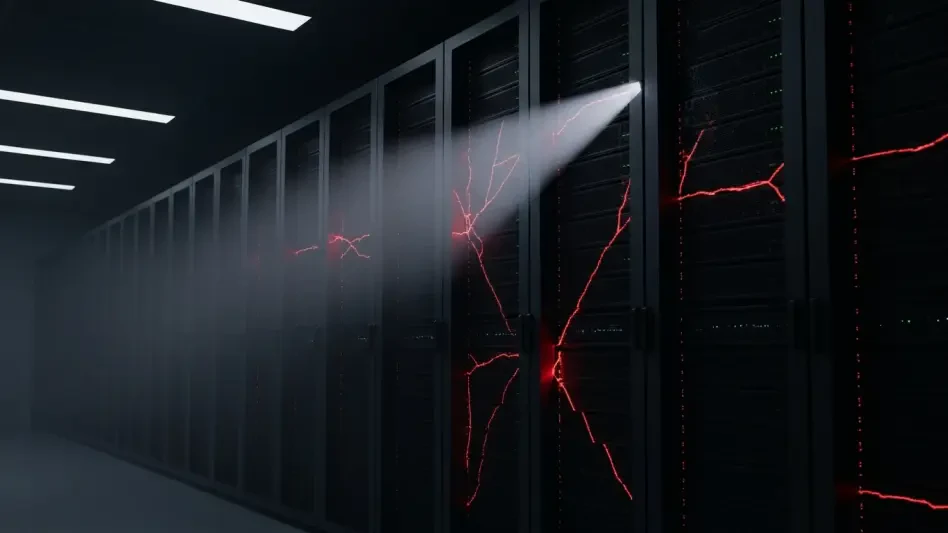In a digital landscape where cyber threats evolve at an alarming pace, the recent surge in zero-day exploits has sent shockwaves through the tech industry, exposing vulnerabilities in some of the most widely used systems and highlighting the urgent need for stronger defenses. A comprehensive threat review released during a major cybersecurity conference has unveiled a staggering 46% year-over-year increase in these previously unknown exploits, casting a spotlight on major tech giants as prime targets. This alarming trend not only underscores the growing sophistication of cybercriminals but also emphasizes the critical need for robust security measures in an era where software and devices are deeply integrated into daily operations. As attackers refine their strategies to exploit unpatched flaws, the implications for businesses, governments, and individuals are profound, raising critical questions about how to stay ahead of such insidious threats.
Rising Cybersecurity Threats
Unprecedented Growth in Zero-Day Vulnerabilities
The dramatic 46% spike in zero-day exploits marks a troubling milestone in cybersecurity, with products from 27 vendors falling victim to these attacks. Leading the list of affected companies, Microsoft accounts for 30% of the targeted products, while Google follows at 11%, alongside other notable names like Apple at 8%. This concentration of risk among major players reflects the widespread reliance on their software and systems, making them lucrative targets for attackers seeking to maximize impact. These exploits, which capitalize on flaws unknown to vendors or users, pose a unique challenge as there is often no immediate patch or defense available. The sheer scale of this issue suggests that adversaries are becoming more adept at identifying and weaponizing hidden weaknesses, putting immense pressure on tech companies to enhance their security frameworks and response mechanisms before breaches escalate into widespread crises.
Beyond the rise in zero-day exploits, the broader vulnerability landscape is equally concerning, with a 15% increase in published vulnerabilities totaling 23,583 new CVEs (Common Vulnerabilities and Exposures) in the first half of the year. This averages to roughly 130 new vulnerabilities per day, a pace that challenges even the most well-resourced security teams. The Cybersecurity and Infrastructure Security Agency (CISA) has also expanded its Known Exploited Vulnerabilities (KEV) catalog by adding 132 CVEs, an 80% jump from the previous period. Alarmingly, nearly half of these vulnerabilities target perimeter infrastructure and predate recent years, indicating that legacy systems remain a weak link in many organizations. This persistent exposure of older flaws alongside new exploits creates a complex threat environment where defenders must address both emerging and historical risks simultaneously.
Ransomware Tactics Evolve to Target Non-Traditional Devices
Ransomware attacks have also seen a significant uptick, with a 36% year-over-year increase resulting in 3,649 incidents across 112 countries during the first half of the year. Unlike traditional targets such as corporate servers or personal computers, attackers are increasingly focusing on non-traditional equipment like edge devices, IP cameras, and Berkeley Software Distribution (BSD) servers. These devices often lack advanced endpoint detection and response (EDR) systems, making them vulnerable entry points for lateral movement across IT, operational technology (OT), and Internet of Things (IoT) environments. High-profile cases, such as the deployment of Akira ransomware through a compromised IP camera, illustrate how these unconventional assets are becoming critical weak spots in broader network security.
Further complicating the ransomware threat is the adaptability of malicious actors, as seen in the VanHelsing group’s development of a multi-platform encryptor that supports BSD UNIX systems. This shift toward niche and less-secured systems signals a strategic evolution in attack methodologies, where cybercriminals exploit gaps in protection that organizations may overlook. The growing focus on such devices underscores the need for comprehensive security strategies that extend beyond conventional endpoints. As ransomware actors refine their approaches to infiltrate interconnected environments, businesses must prioritize visibility and protection across all assets, ensuring that even the most obscure components of their infrastructure are safeguarded against emerging threats.
Diverse Threat Actors and Geopolitical Influences
Blurring Lines Between Hacktivists and Nation-State Actors
The threat landscape is further complicated by the diversity of actors involved, with 137 active groups identified in the first half of the year. Among these, 51% are financially motivated cybercriminals, while 40% are state-sponsored, and 9% are hacktivists. A notable trend is the increasing overlap between hacktivists and nation-state actors, particularly with groups aligned with certain geopolitical agendas employing aggressive disruption tactics under the guise of activism. This convergence often targets critical operational technology (OT) environments, amplifying the potential for widespread disruption. The difficulty in attributing these attacks, with the origins of 45 groups remaining unknown, adds another layer of complexity to crafting effective countermeasures against such hybrid threats.
Geopolitical tensions are also fueling the intensity and speed of these attacks, with certain regions emerging as key sources of threat activity. China leads with 33 identified groups, followed by Russia with 22, and Iran with eight, among others. This distribution highlights how state-sponsored actors often operate with resources and motives that transcend typical cybercrime, aiming for strategic or political impact rather than just financial gain. The blending of ideological and state-driven objectives creates a volatile cybersecurity environment where attacks are not only harder to predict but also more challenging to mitigate. As these dynamics evolve, organizations must adopt a nuanced understanding of threat actors’ motivations to better anticipate and defend against their tactics.
Adapting Defenses to a Complex Threat Landscape
Reflecting on the escalating challenges posed by zero-day exploits, ransomware, and diverse threat actors, it becomes evident that the cybersecurity landscape has reached a critical juncture. The targeting of major tech vendors like Microsoft and Google underscores the urgent need for accelerated patch management and proactive vulnerability scanning to close gaps before exploitation occurs. Meanwhile, the shift toward non-traditional devices as attack vectors reveals a pressing demand for broader security coverage across all network components. Looking ahead, organizations should focus on integrating advanced threat intelligence and cross-environment monitoring to detect and respond to sophisticated attacks swiftly. Strengthening international collaboration to address geopolitical cyber threats and investing in adaptive security measures will be essential steps in safeguarding critical infrastructure and maintaining resilience against an ever-evolving array of digital risks.








